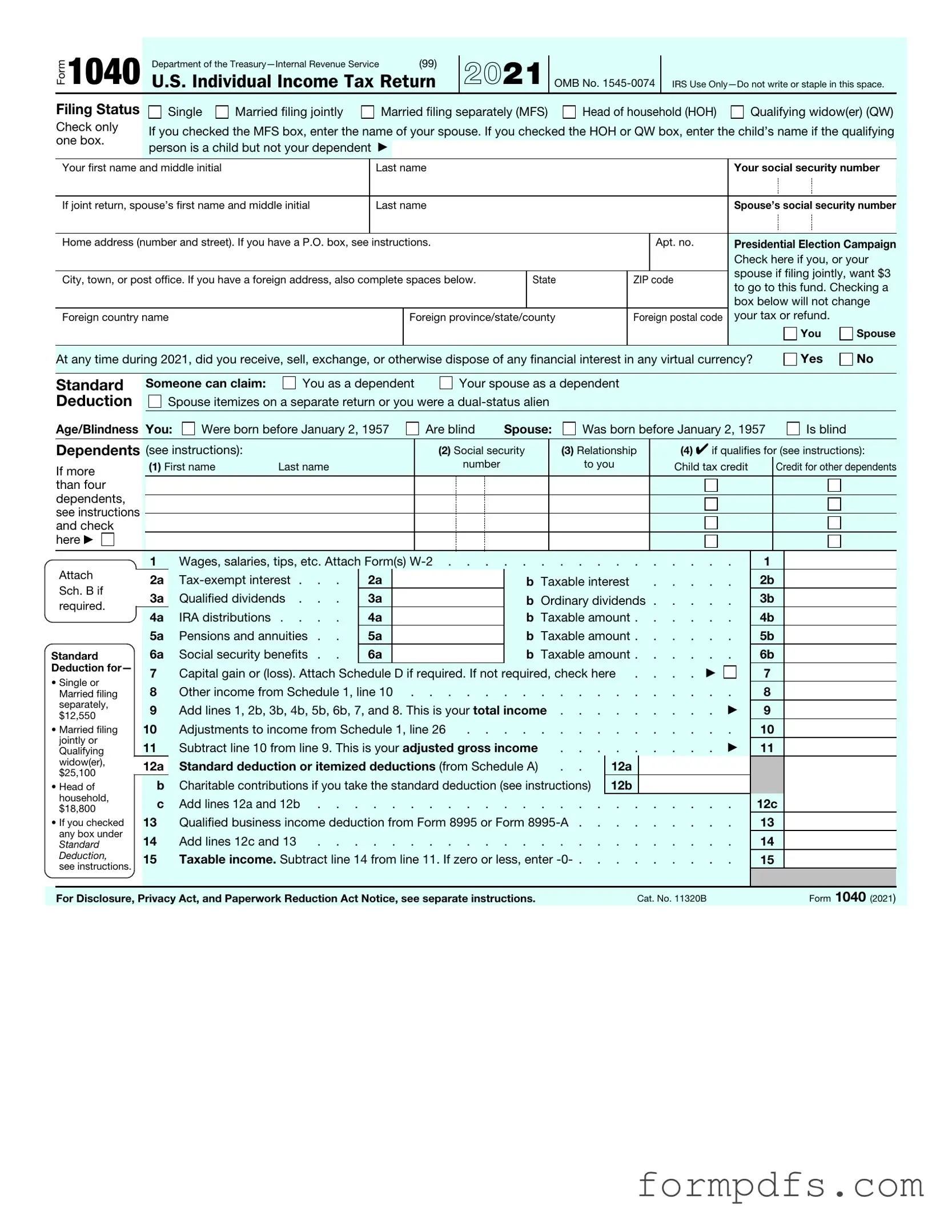What is the IRS 1040 form?
The IRS 1040 form is the standard individual income tax return form used by U.S. taxpayers to report their annual income. This form allows individuals to calculate their tax liability, claim tax credits, and determine whether they owe taxes or will receive a refund. It is typically due on April 15th each year, unless that date falls on a weekend or holiday.
Who needs to file a 1040 form?
Most U.S. citizens and residents who earn income must file a 1040 form. This includes individuals who are self-employed, receive wages, or have investment income. There are certain income thresholds that determine whether you are required to file, which can vary based on your filing status, age, and type of income.
What information do I need to complete the 1040 form?
To complete the 1040 form, you will need personal information such as your name, address, and Social Security number. Additionally, you will need details about your income sources, including W-2 forms from employers, 1099 forms for freelance work, and any other relevant financial documents. You should also gather information about deductions and credits you may qualify for, such as mortgage interest or education credits.
What are the different versions of the 1040 form?
There are several versions of the 1040 form, including the 1040-SR for seniors, which features larger print and a simplified layout. Additionally, there is the 1040-NR for non-resident aliens. Each version is designed to cater to different taxpayer needs, but all serve the same primary purpose of reporting income and calculating taxes owed.
How do I file my 1040 form?
You can file your 1040 form electronically using tax preparation software or through a tax professional. Alternatively, you can complete a paper form and mail it to the appropriate IRS address. If you choose to file electronically, you may receive your refund faster than if you file by mail.
What should I do if I make a mistake on my 1040 form?
If you discover an error after submitting your 1040 form, you can file an amended return using Form 1040-X. This form allows you to correct mistakes related to income, deductions, or credits. It’s important to file an amendment as soon as you realize the error to avoid potential penalties or interest from the IRS.
